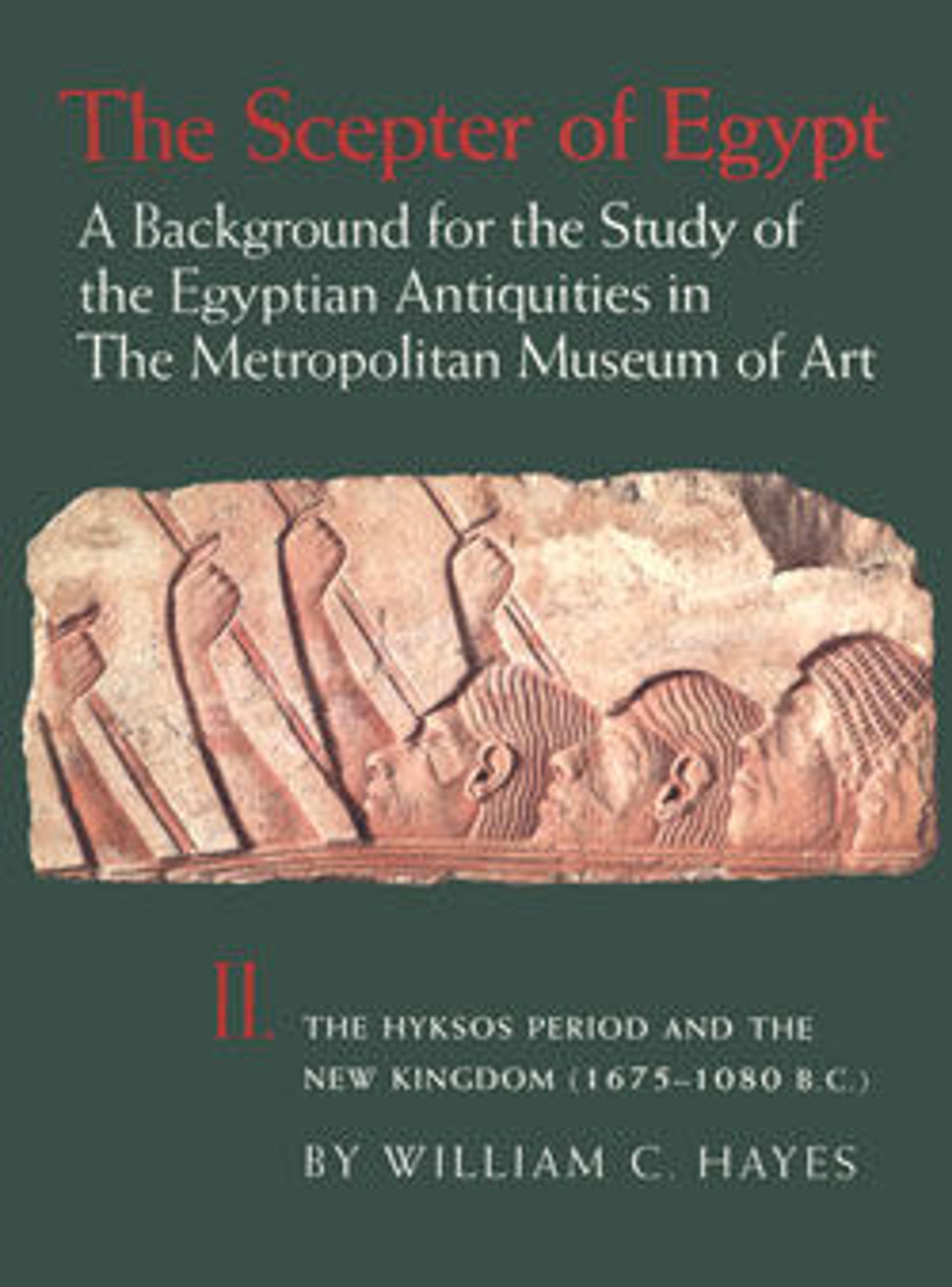Head and Shoulders from an Osiride Statue
This bust comes from one of the colossal Osiride statues of Hatshepsut that originally stood over 15 feet (4.6 m) high. The statues were attached to the square pillars of the uppermost portico of her temple at deir el-Bahri. Hatshepsut holds a crook and flail across her chest and once wore the White Crown of Upper Egypt indicating that this fragment belonged to a figure positioned on the southern side of the portico. The head of another figure (31.3.159) wears the Double Crown and would have been on the northern side.
These colossal figures were architectural accents rather than freestanding statues and were carved from the same limestone blocks that were used to construct the colonnade. Some twenty years after Hatshepsut's death, the statues were hacked off of the pillars and the fragments were thrown into two large depressions in front of the temple where they were discovered by the Museum's excavators in the early twentieth century.
These colossal figures were architectural accents rather than freestanding statues and were carved from the same limestone blocks that were used to construct the colonnade. Some twenty years after Hatshepsut's death, the statues were hacked off of the pillars and the fragments were thrown into two large depressions in front of the temple where they were discovered by the Museum's excavators in the early twentieth century.
Artwork Details
- Title:Head and Shoulders from an Osiride Statue
- Period:New Kingdom
- Dynasty:Dynasty 18
- Reign:Joint reign of Hatshepsut and Thutmose III
- Date:ca. 1479–1458 B.C.
- Geography:From Egypt, Upper Egypt, Thebes, Deir el-Bahri, Senenmut Quarry, in hole, MMA excavations, 1926–28
- Medium:Limestone, paint
- Dimensions:H. 100 cm (39 3/8 in); w. 115 cm (45 1/4 in)
- Credit Line:Rogers Fund, 1931
- Object Number:31.3.156
- Curatorial Department: Egyptian Art
More Artwork
Research Resources
The Met provides unparalleled resources for research and welcomes an international community of students and scholars. The Met's Open Access API is where creators and researchers can connect to the The Met collection. Open Access data and public domain images are available for unrestricted commercial and noncommercial use without permission or fee.
To request images under copyright and other restrictions, please use this Image Request form.
Feedback
We continue to research and examine historical and cultural context for objects in The Met collection. If you have comments or questions about this object record, please contact us using the form below. The Museum looks forward to receiving your comments.
